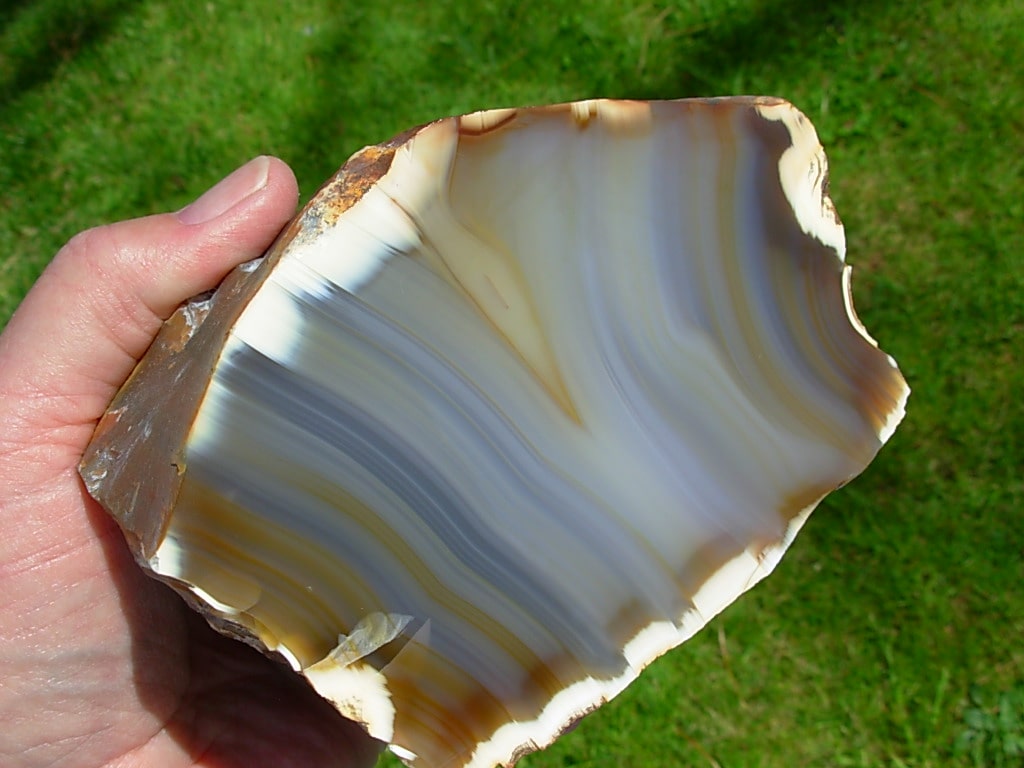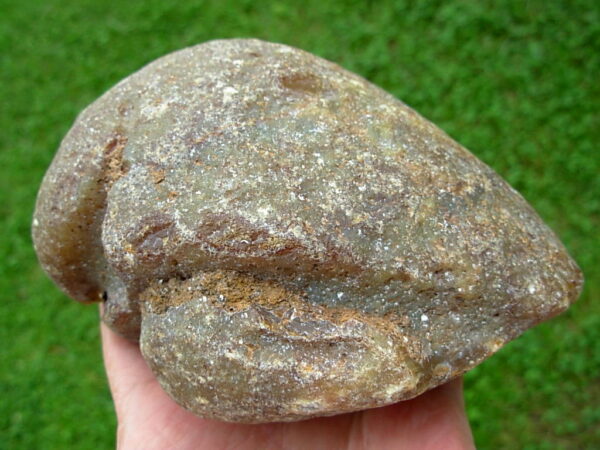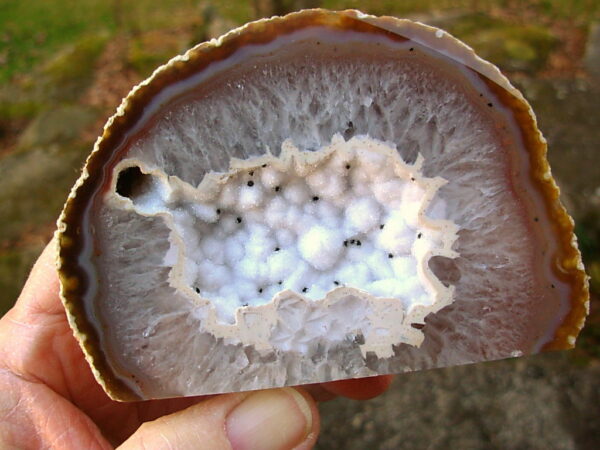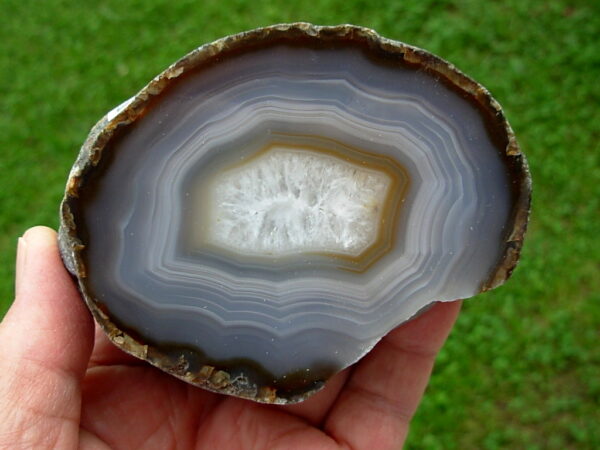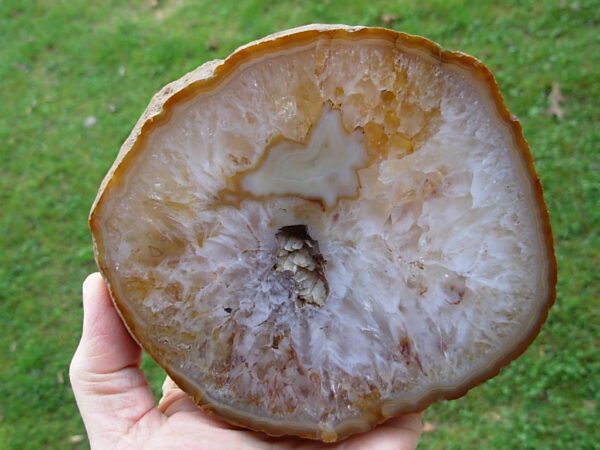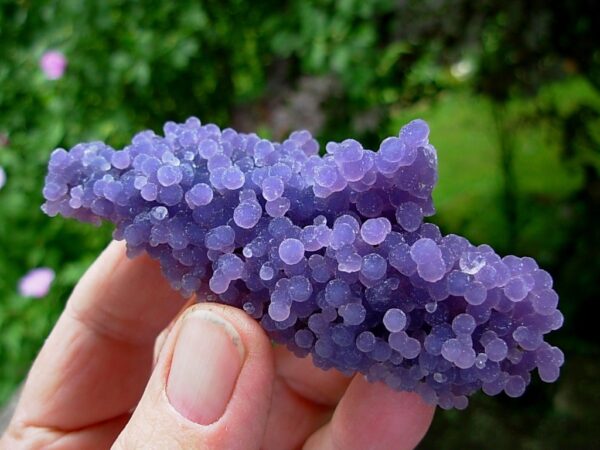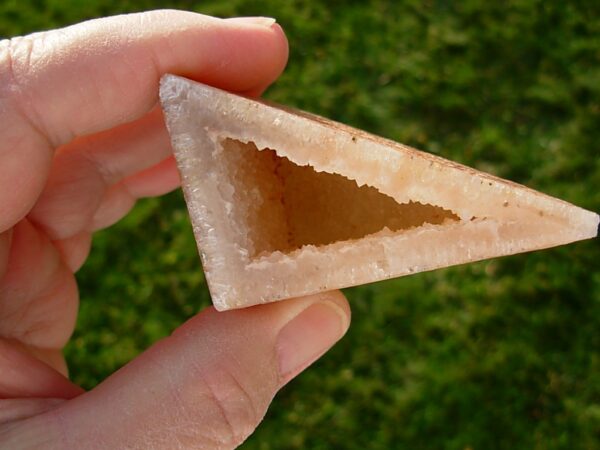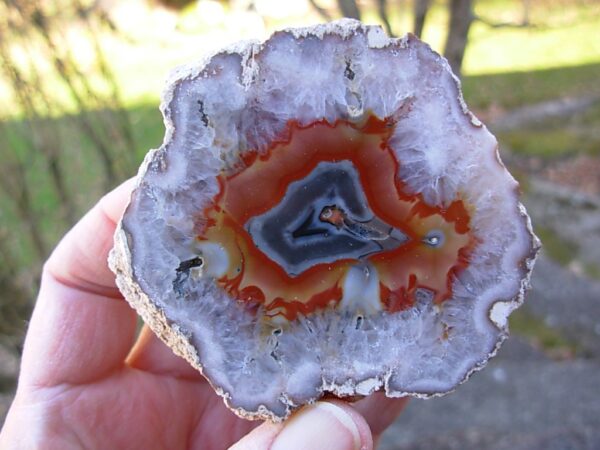Agates Locale, Information and Types
Most agates occur as nodules in volcanic rocks or lava flows. Agates are formed in cavities produced by gas bubbles in the molten magma. These cavities are filled by siliceous materials that are deposited in regular layers upon the walls. Agate can also be found as a veins or layers that formed in voids or cracks in volcanic or rock fractured by intrusive masses. When agates are cut you can find a succession of very thin parallel lines giving a banded appearance to the agate. Such stones are known as banded agate, riband agate and striped agate.
During the formation of the agate waters containing silica percolated through the rock and deposited a siliceous coating on the interior of the cavities. Changes in the mineral solution, or in the conditions which they are deposited, can cause a mineral variation in the layers. Bands of chalcedony often alternate with layers of crystalline quartz. Several gas bubbles may join and form large cavities in the magma and lava. This is how large amethyst geodes are formed.
Agates may be found in various kinds of rock, they are normally associated with volcanic rocks but can be common in certain metamorphic rocks. They form in concentric layers and fill cavities in a host rock. The results are round nodules bands similar to tree trunks and may appear as eyes, scallops, or as landscapes with dendrites that look like trees. This last type is called Tree Agate or Moss Agate. Many fossils are actually agatized material that replaced an organic substance such as wood. Many varieties of petrified wood are examples where the original structure has been replaced with agate.
Click on the Photos Below to See our Other Agate Pages
The word Agate comes from the Greek name for a stone originally found in the Achates River in Sicily (currently known as the Dirillo River). Agate has been found with the remains of Stone Age man in France from as early as 20,000-16,000 BC and the Egyptians used agates prior to 3000 BC for talismans, amulets, seals, rings and vessels. Early civilizations used eye beads to protect them from evil and bring good luck. They created eye beads by carving a hole through an agate disc.
Although agate is found all over the world, the most exceptional specimens come from Southern Brazil and Northern Uruguay. However, the moss agates of Colorado and Montana are equal in beauty and some beautiful specimens have been found in Mexico and California. A geode type of agate, called "Thunder Egg" by Native American Indians, is found in Oregon. Fire agates come from Mexico and Arizona. Deposits exist in China, Mexico, India, Madagascar, and the USA along the shores of Lake Superior. Agates are found all over the world wherever highly pressurized hot water rich in silica filled crevices and vugs. Often tiny quartz crystals form within the stone and add to the beauty and uniqueness of individual stones. These crystals are called drusy (sometimes misspelled as druzy).
The outer surface of an agate is rough, pitted and ugly. It hides the beauty of the crystal inside. However, the crust is weak and somewhat fragile and over centuries it is washed away allowing the gemstone to be discovered along rivers and streams.
Agate occurs in most colors including black, gray, brown, reddish, green, pink, blue, and yellow from transparent to opaque. Today, many of these stones are artificially dyed to enhance the depth of color and to produce more vivid tones than those found in nature. If you think the specimen you are looking at is dyed rather than natural don’t be afraid to ask. Reputable sellers always list whether an agate is dyed or natural. There are thousands of localities worldwide where agate specimens have been found, many of these are named for the locality. Some areas with exceptionally beautiful specimens have been depleted by over mining, but because agate is so common there are usually several new discoveries each year.
The following is only a partial listing of the most commonly known varieties:
Banded Agate, Blue Agate, Blue Lace Agate, Botswana Agate, Brecciated Agate, Carnelian Agate, Cloud Agate, Crazy Lace Agate, Dendritic Agate, Fire Agate, Green Agate, Indian Agate, Laguna Agate, Mexican Lace Agate, Montana Agate, Moss Agate, Nipomo Agate, Oregon Snake skin Agate, Picture Agate, Plume Agate, Pom Pom Agate, Rainbow Agate, Russian Agate, Sagenite Agate, Sweetwater Agate, Sonoran Agate, Tree Agate, Wood Agate, Tube Agate, and Turretella Agate.
The hobby of collecting bowls made of agate was popular during the renaissance and this activity was responsible for the growth of the lapidary industry near Idar-Oberstein in Germany. Although agate beds were originally found in that area, most of the local deposits were depleted in the nineteenth century. Today the majority of the agate sold in Idar-Oberstein is actually imported from Brazil. (Native Idar-Oberstein agates are highly sought after and are becoming very valuable)
Many Gem and Mineral shows sponsor old time rock hounds that bring hundreds of geodes to break open with a specially made tool that splits the geode open leaving the internal material undamaged. Crowds that gather at his booth pay their money, in hopes of owning a beautiful specimen full of amethyst or citrine crystals. Agate geodes can be very small or very large. The largest geode ever mined was found in Brazil and weighed almost two tons.

